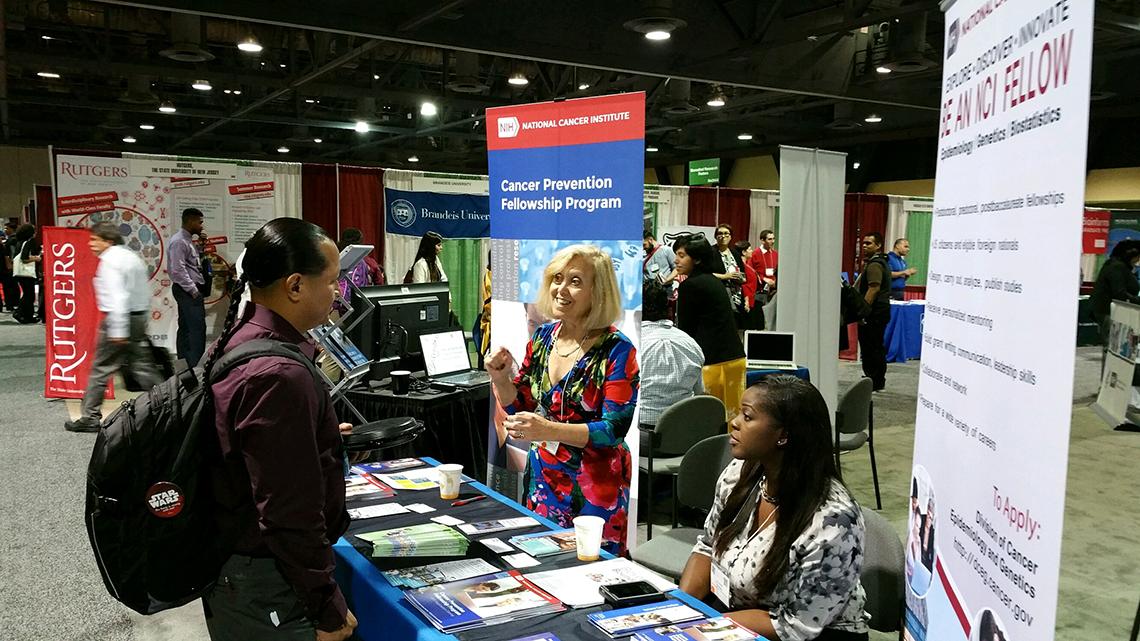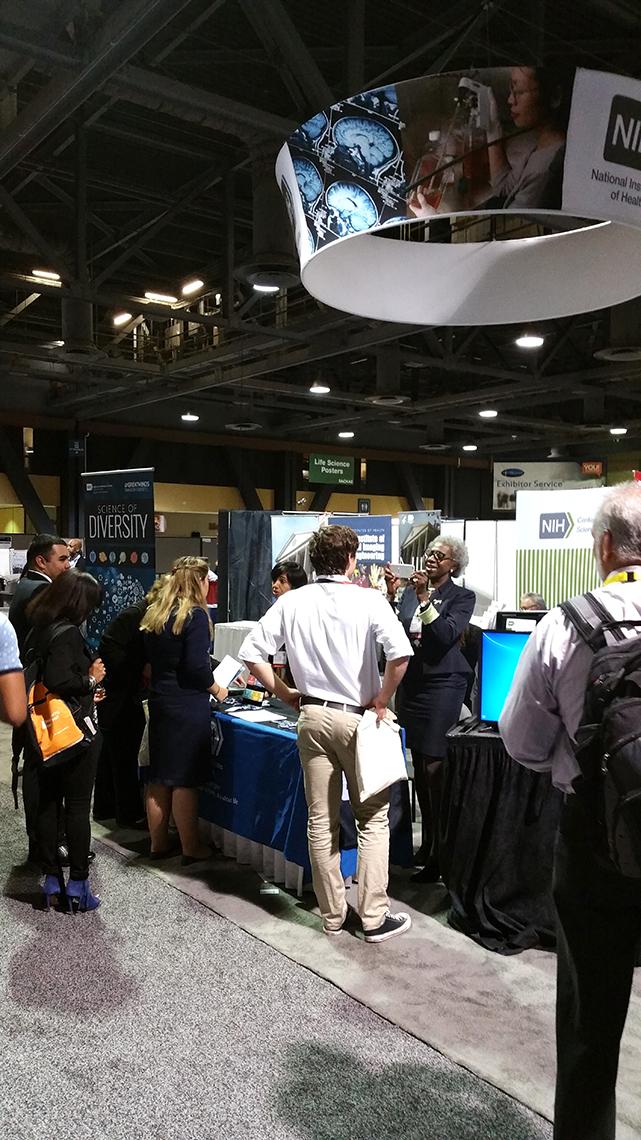‘ONE NIH’ Approach Used to Recruit at Conference
Recently, the ONE NIH recruitment approach traveled to Long Beach, Calif., to participate in the annual conference of SACNAS (Society for Advancing Chicanos/Hispanics & Native Americans in Science), one of the largest organizations dedicated to fostering the success of Chicano/Hispanic and Native American scientists, from college students to professionals.
The annual conference attracts more than 4,000 students, faculty and STEM partners who gather to exchange cutting-edge science, mentoring and scientific training opportunities. NIH institutes and centers participate in breakout sessions and exhibits to promote their training programs, fellowships and other opportunities. Reaching underrepresented minority students in science is a major focus for NIH in order to foster diversity in scientific and clinical areas.
The Office of Human Resources’ corporate recruitment unit (CRU) developed an initiative that would allow for multiple ICs to share space, reducing some exhibiting costs and promoting the diverse scientific missions and opportunities of each entity. In 2016, 15 different offices and divisions from 9 ICs participated in this initiative, referred to as the ONE NIH Approach.
The NIH’ers were able to engage with approximately 500 SACNAS attendees to share information about NIH. The ONE NIH booth also hosted Dr. Hannah Valantine, chief, Office of Scientific Workforce Diversity, who engaged with students whose institutions are members of BUILD, a scientific workforce diversity initiative. The CRU has managed the logistics of 7 conferences using the ONE NIH approach over the last 4 years.


